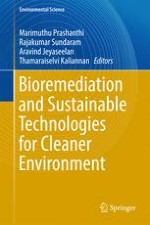This book offers insights into the current focus and recent advances in bioremediation and green technology applications for waste minimization and pollution control. Increasing urbanization has an impact on the environment, agriculture and industry, exacerbating the pollution problem and creating an urgent need for sustainable and green eco-friendly remediation technology. Currently, there is heightened interest in environmental research, especially in the area of pollution remediation and waste conversion, and alternative, eco-friendly methods involving better usage of agricultural residues as economically viable substrates for environmental cleanup are still required.
The book offers researchers and scholars inspiration, and suggests directions for specific waste management and pollution control. The research presented makes a valuable contribution toward a sustainable and eco-friendly societal environment.
